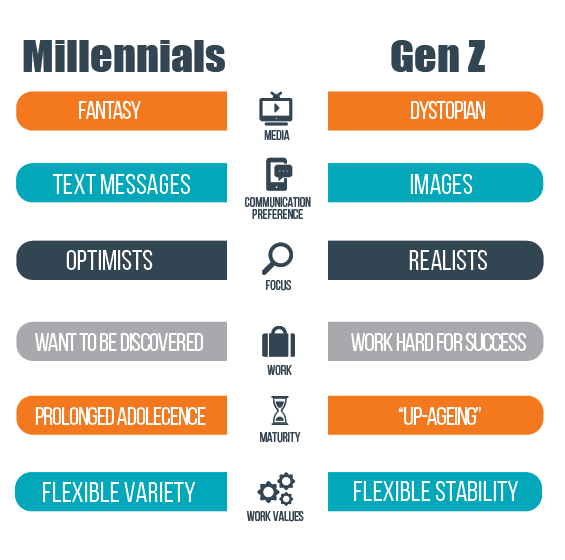
Retailers need to try their best in order to drive the attention of the generation Z or so-called millennials. They appear to be the dominating consuming force and introduce the new gen of digital buyers.
Business owners need to consider various types of their buyer persona. However, they should also keep an eye on the latest trends that unveil generation Z as the dominating consuming force today. Millennials represent the new generation of buyers who were brought up in the world of digital developments and mobile infrastructure. It means that traditional brick-to-mortar business approaches might not work out.
What are the baseline tools to attract the attention of millennials and meet their growing requirements? Retailers need to find the answer to this question. Otherwise, the risk to be left overboard in terms of revenues and modern retail rends.
What Is Generation Z?
Generation Z introduces a modern person who cannot imagine his or her life without a mobile device. Brought up in developing digital environment, establish a new approach to the buying process. They spend most of the time on different social networks and digital marketplaces.

Facebook, Instagram, Pinterest, and other platforms appear to be the main distributions channels. At the same time, a small percentage of retailers can take the fullest from those channels due to different reasons. In other words, they simply lose their potential customers in the face of millennials.
On the other hand, implementing new digital sale instruments may not be enough. Retailers should establish a more flexible approach taking into account some of the following issues:
- Ethnic Diversity. Only 50% of all millennials in the United States are white. The rest consists of African and Latin Americans as well as some other ethnical groups. Europe faces actually the same situation. It means that retailers should consider various religions, customs, traditions, and other vital things when selling food specialties, drinks or clothes.
- Saving Habits. Millennials feature different buying habits from what we had 10 years ago. The economic crisis resulted in a desire to save a couple of extra bucks. No longer they believe in financial stability. They are looking for the most cost-effective solution available on the market. Retailers should establish a more flexible pricing policy and never forget about loyalty programs and discounts.
- All-in-One Solution. Millennials are pretty lazy. They prefer looking up the product while surfing the net rather than traveling around the city in search of a store. Mobile technologies are the best way to deliver products and services to the end user by means of apps and huge digital marketplaces.
- Food Trends. Millennials easily indulge in various food trends. Vegetarians are becoming the dominating force as well. If not considering this factor, retailers are very likely to lose their market shares.
- Loyalty Programs. The latest studies unveil more than 30% of millennials will never opt for a store that does not have special offers or loyalty programs. In fact, such programs have grown into the major distribution channel. Retailers should take into account personalized offers blended with general promotions.
All the above-mentioned may certainly work out if thoughtfully implemented in retailers’ digital strategies. At the same time, we should never forget about other types of the target audience and offer as flexible tactics as possible.

Leave a Reply